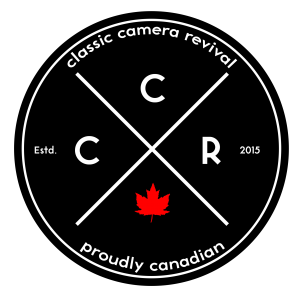
On today’s episode, John is going to dig into one of his favourites if not rare and annoying cameras in his collection, the Kodak Medalist. A unique camera with a unique place in the history of camera equipment and the American photographic industry. The Medalist grew out of the need for a high-quality camera that was both robust and American built for the US Military. The year was 1939, World War Two had started with the Japanese invasion of mainland China and the Nazi invasion of eastern Europe. And while America remained neutral, war production cut off the source of high-quality cameras from these two nations. Enter Eastman Kodak of Rochester, New York. Kodak set out to design a robust camera that produced a high-quality image on a large negative but in a portable camera. Turning again to Walter Teague for the design. Kodak based their new military camera around their 620 film and the 6×9 negative format, building around it a cast metal frame, automatic film advance, a top of the line Ektar Lens, and an integrated rangefinder. The camera frame proved small enough to be portable, yet large enough to operate even with gloves. The camera had the tolerance to operate in any weather condition from the high-artic to the equator.

The trouble with the Kodak Medalist is that to construct a robust camera the design proved to be far more Rube Goldberg in the operation and one does not simply pick up the Medalist and go to town, you have to read the manual before loading the film. Yes, what should be a simple process requires multiple steps and even advancing the knob too much could cause catastrophic failure in the camera. Even focusing the camera is a matter of some trouble with a separate rangefinding window just below the viewfinder. Think of it as a small auxiliary exhaust port just below the main one. But the rangefinder on the medalist uses prisms and glass, not mirrors which means that your rangefinder is just a bright today as it was during the war.




If you haven’t been scared off yet, feel good about yourself because despite the messy nature of the camera it makes up for the problems with quality. The lens is a 100mm f/3.5 Kodak Ektar lens, Ektar being the top lens from Kodak for many years. Ektar standing for Eastman Kodak Tessar. Focusing is done through a large helical and paired with either a Supermatic No. 2 shutter or post-war models a Flash Supermatic. These days a Medalist is a fine camera, but the trouble is getting them repaired. For the longest time, Ken Ruth was the man with the knowledge but he has since retired after a long time servicing these fine cameras. But you can still get them repaired, LeZot in Williston, Vermont or Cameraworks in Latham, New York will both work on the cameras. Now the repair manuals are readily available online however due to the complex nature of even the shutters, we don’t recommend working on these cameras yourself. And if you are looking to purchase them, it’s best to buy one already in functioning conditions with a complete CLA. Getting 620 film to drive the camera isn’t that hard either, you can purchase re-rolled fresh film directly from the Film Photography Project, or just do the work yourself.
Camera Specifications
Make: Kodak
Model: Medalist
Type: Rangefinder
Format: Medium (620) 6×9
Lens: Fixed, Kodak Ektar 100mm 1:3.5 (5 Elements in 3 Groups, Lumenized) f/3.5-f/32
Shutter: Kodak Supermatic No. 2, 1″-1/400″ + B
Manufactured: 1941-1948
Make: Kodak
Model: Medalist II
Type: Rangefinder
Format: Medium (620) 6×9
Lens: Fixed, Kodak Ektar 100mm 1:3.5 (5 Elements in 3 Groups, Lumenized) f/3.5-f/32
Shutter: Kodak Flash Supermatic 1″-1/400″ + B
Manufactured: 1944-1953
Looking for a good spot to get your gear and material fix check out Burlington Camera (Burlington, ON), Downtown Camera (Toronto, ON), Film Plus (Toronto, ON), Belle Arte Camera (Hamilton, ON), Pond’s FotoSource (Guleph, ON), Foto Art Camera (Owen Sound, ON). Out West there’s The Camera Store (Calgary, AB) and Beau Photo Supply (Vancouver, BC). Additionally you can order online at Argentix (Quebec), buyfilm.ca (Ontario), the Film Photography Project or Freestyle Photographic. Looking for development options, check out these labs that have our support, Boréalis Photo Lab, Old School Photo Lab, The Darkroom, and Film Rescue International.
Also you can connect with us through email: classiccamerarevivial[at]gmail[dot]com or by Facebook, we’re at Classic Camera Revival, Twitter @ccamerarevival, and Instagram (@classiccamerarevival)!
